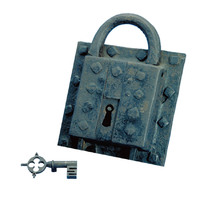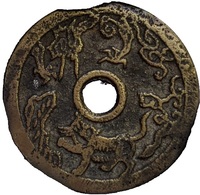Preserving Customs

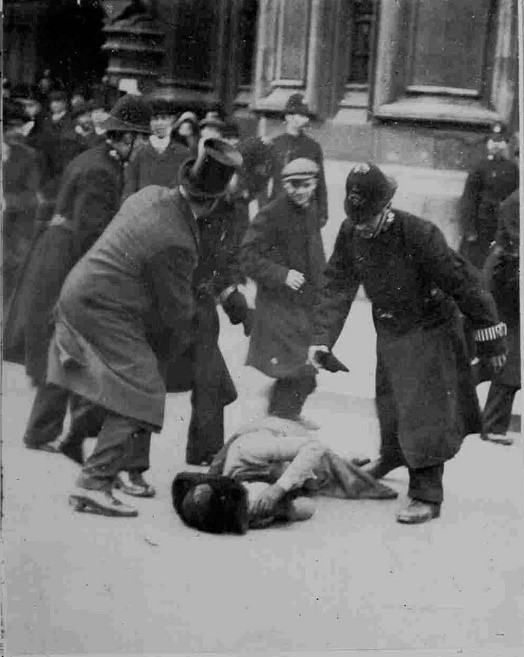
A suffragette on the ground surrounded by men, including a police officer, during the 1910 Black Friday protests.
Protection can be given not only to physical entities but also to customs, beliefs and institutions. These can range from a wish or blessing for good luck to something which upholds social norms.
Social norms shape the way we live and interact with each other; they are often explicit or implicit guidelines on which we model our behaviour. Patriarchal social norms, for example, continue to shape our daily lives. These norms only become real when they are upheld by a community, even if this is done unconsciously. Institutions such as schools and the police enforce societal standards, sometimes even those that are detrimental to society.
Luck can convey protection, but belief in luck is also something to be protected. Storytelling, blessings and designating physical objects ‘lucky’, can help strengthen belief in luck and its importance in everyday life. Focusing on either improving fortunes or protecting the lucky object's owner from hardship or evil, luck is an important tradition throughout the world.
The defence of these immaterial ideas is defined by actions. Customs cannot be locked away, so they must be protected through other means. They are taught to us, enforced by society, and reinforced through our belief in their existence and power.
Gallery
Click on an image to view full size.

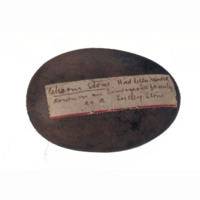
Inverurie lucky stone
1850-1915
Inverurie, Scotland
Objects gain a reputation for being lucky when they are present at moments of good fortune. They are fuelled by their tales and empowered by a collective belief. This kind of shared faith is evident in this stone’s label. It states that the stone was handed down in an Inverurie family to bring good luck.
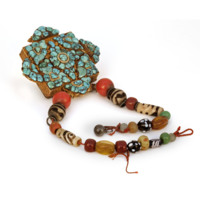
Gau box
Early 1900s
Tibet
Tibetan gau boxes hold handwritten charms consecrated by a Lama (spiritual leader) for protection against natural disasters and illness. Gau boxes usually hang on pendants around the neck as they must be in physical contact with the body for the charms to work. The practice of wearing gau boxes has occurred for thousands of years in Buddhist Tibet.

Police truncheon
1837-1901
Banffshire, Scotland
The police were created to protect people from becoming victims of crime. However, they do not only protect people; the police can also uphold societal norms by enforcing laws. They are one of the few governmental institutions that are permitted to use force to fulfil their role. How much force is considered appropriate varies from country to country.

Branks
1600-1800
Scotland
Branks are iron cages placed over the head to humiliate the wearer. The majority of those punished this way were women whose speech was deemed improper. Given that this punishment was created by a male-dominated authority to control women’s behaviour, branks are often viewed today as a means of protecting patriarchal values.
Padlock
1860
The Tolbooth, Aberdeen, Scotland
Aberdeen’s Tolbooth was a jail from the 17th to the 19th century. This padlock is said to have been used in the Tolbooth to lock the cell of a condemned prisoner. Prison was viewed as an institution that protects the general public by removing criminals from society, but by 1800 even poaching could condemn a person to death. Who, then, was this institution really protecting?
Chinese charm coin
Unknown date
China
From the Western Han Dynasty to the present day, charm coins have been used to banish evil and bring good fortune. Nowadays, they are often used as commemorative coins. The front of this coin depicts Jiang Ziya, a minister who is believed to dispel evil gods and bring good luck. On the reverse, two lucky animals, a dragon and a tiger, can be seen.

